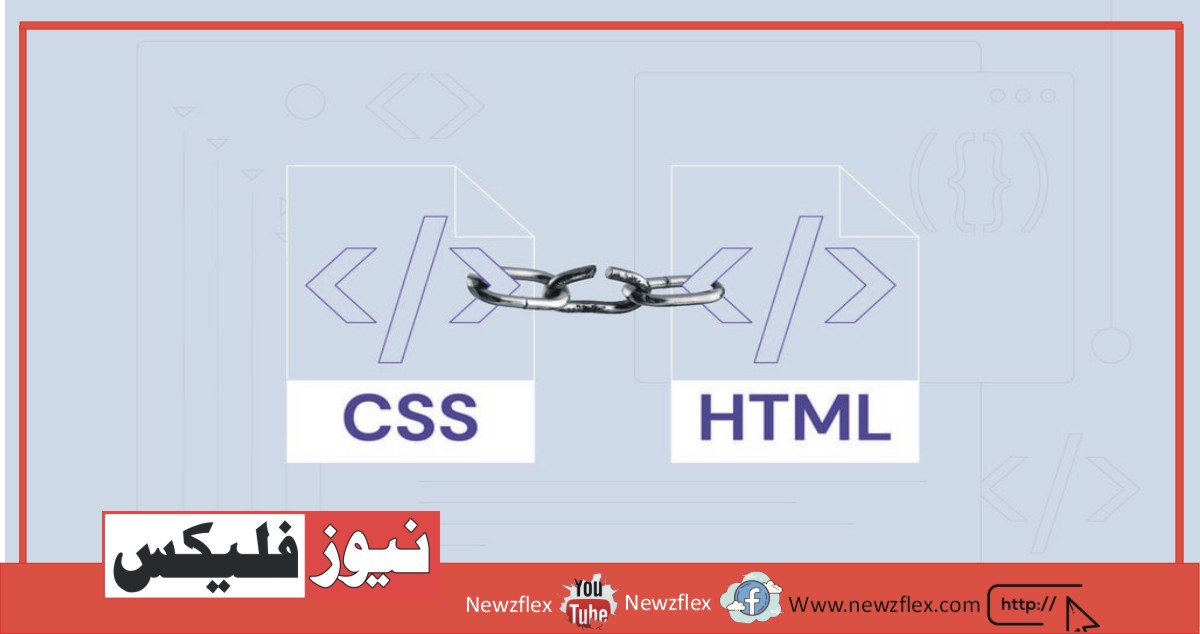
HTML or CSS? Which is the best one?
HTML (Hypertext Markup Language)
HTML stands for Hypertext Markup Language. It is a markup language used to create web pages and other types of documents that are intended for display in a web browser.
HTML is used to structure content on the web page and specify the layout and formatting of text, images, and other types of media. HTML uses a set of tags and attributes to define the different elements on a web page.
For example, the following code creates a simple web page with a heading and a paragraph:
<!DOCTYPE html>
<html>
<head>
<title>My First Web Page</title>
</head>
<body>
<h1>Welcome to my web page</h1>
<p>This is my first web page using HTML.</p>
</body>
</html>
In this code, the <html> element defines the start of the HTML document, while the <head> element contains meta-information about the document, such as the title of the web page. The <body> element contains the visible content of the web page, and the <h1> and <p> elements define a heading and a paragraph, respectively.
HTML is an essential skill for web developers and designers, as it forms the foundation of all web pages and is required to create dynamic and interactive web applications.
CSS (Cascading Style Sheets)
CSS stands for Cascading Style Sheets. It is a language used to define the presentation and styling of web pages created using HTML and other markup languages.
CSS is used to control the visual appearance of web pages, including the layout, fonts, colors, and other design elements. It allows developers to separate the content of a web page from its presentation, making it easier to update the styling of a website without affecting its content.
For example, the following CSS code defines the styling for the heading and paragraph elements in an HTML document:
h1 {
font-size: 32px;
color: #333;
}p {
font-size: 18px;
line-height: 1.5;
}
In this code, the h1 selector targets the heading element and sets its font size to 32 pixels and color to #333, while the p selector targets the paragraph element and sets its font size to 18 pixels and line height to 1.5.
CSS can be used to create complex and dynamic web designs, including responsive layouts that adjust to different screen sizes and devices. It is an essential skill for web developers and designers, as it allows them to create visually appealing and user-friendly web pages.
HTML or CSS? Which is best to use for?
HTML and CSS are both essential components of modern web development and serve different purposes.
HTML is used to define the structure and content of a web page, including headings, paragraphs, images, and other types of media. HTML provides the basic building blocks for web pages and allows developers to create structured, semantically meaningful content that can be easily understood by search engines and assistive technologies.
CSS, on the other hand, is used to define the visual appearance and styling of a web page. CSS allows developers to control the layout, fonts, colors, and other design elements of a web page, creating a visually appealing and user-friendly experience for visitors.
In short, HTML is used to define the content and structure of a web page, while CSS is used to define the presentation and styling. Both HTML and CSS are essential for modern web development and are used together to create professional-looking and functional websites.
Therefore, it’s not a matter of which one is best to use, but rather, it’s important to learn both HTML and CSS as they serve different purposes and are both critical skills for web development.
Features of HTML
HTML, or Hypertext Markup Language, is a markup language used to create web pages and other documents that are intended for display in a web browser. Here are some of the key features of HTML:
1. Structure and Semantics: HTML provides a standardized way of structuring content on the web page, using elements such as headings, paragraphs, lists, and tables. These elements provide semantic meaning to the content, making it easier to understand for search engines and assistive technologies.
2. Tags and Attributes: HTML uses tags and attributes to define the different elements on a web page, such as text, images, and other media. Tags are enclosed in angle brackets, and attributes provide additional information about the element, such as its size, color, or location on the page.
3. Cross-platform compatibility: HTML documents can be accessed and viewed on different platforms, such as desktop computers, laptops, tablets, and mobile devices, making it a widely-used language for creating web pages.
4. Ease of use: HTML is relatively easy to learn and use, even for beginners. It has a simple syntax and a wide range of online resources and tutorials available for learning.
5. Integration with other technologies: HTML can be easily integrated with other technologies, such as CSS for styling and JavaScript for interactivity, allowing developers to create dynamic and interactive web pages.
These are some of the key features of HTML, which make it an essential language for web development and a foundation for building professional-looking and functional websites.
Features of CSS
CSS, or Cascading Style Sheets, is a language used for styling and presenting web pages. Here are some of the key features of CSS:
1. Separation of presentation and content: One of the most important features of CSS is its ability to separate the presentation of a web page from its content. This means that developers can write HTML to define the content of a web page, and then use CSS to control the layout, colors, fonts, and other design elements.
2. Cascading rules: CSS uses cascading rules to determine how styles are applied to different elements on a web page. This allows developers to define styles at different levels, from the global level to the local level, making it easier to manage and maintain the styling of a web page.
3. Responsive design: CSS allows developers to create responsive web designs that adjust to different screen sizes and devices. By using CSS media queries, developers can create designs that are optimized for desktops, tablets, and mobile devices, ensuring a consistent user experience across different platforms.
4. Modularity and reuse: CSS allows developers to create modular styles that can be reused across multiple web pages, making it easier to maintain a consistent look and feel for a website. This reduces development time and makes it easier to update the styling of a website in the future.
5. Extensibility: CSS is extensible, which means that developers can use CSS preprocessors and frameworks, such as SASS and Bootstrap, to simplify and streamline the development process. These tools provide additional features and functionality, such as variables, mixins, and prebuilt styles, that can be used to enhance the styling of a web page.
These are some of the key features of CSS, which make it an essential language for modern web development and an important tool for creating visually appealing and user-friendly web pages.
Similarities Between HTML and CSS
HTML and CSS are both important technologies used in web development, and there are some similarities between the two:
1. Both are markup languages: Both HTML and CSS are markup languages that are used to define and structure content on a web page. While HTML is used to define the structure and content of a web page, CSS is used to define its presentation and styling.
2. Both are essential for web development: HTML and CSS are both essential for creating professional-looking and functional websites. HTML provides the basic building blocks for web pages, while CSS allows developers to control the layout, fonts, colors, and other design elements of a web page.
3. Both use a syntax of tags and attributes: Both HTML and CSS use a syntax of tags and attributes to define the different elements and styles on a web page. HTML uses tags to define the structure and content of a web page, while CSS uses selectors and declarations to define styling and presentation.
4. Both are platform-independent: HTML and CSS are both platform-independent, which means that web pages created using HTML and CSS can be accessed and viewed on different platforms, such as desktop computers, laptops, tablets, and mobile devices.
5. Both can be used together: HTML and CSS are often used together to create professional-looking and functional web pages. By combining HTML and CSS, developers can create visually appealing and user-friendly web pages that are optimized for different devices and screen sizes.
These are some of the similarities between HTML and CSS, which make them both essential tools for modern web development.
Difference between HTML and CSS
HTML and CSS are both important technologies used in web development, but they have different roles and functions. Here are some of the main differences between HTML and CSS:
1. Function: HTML is used to define the structure and content of a web page, while CSS is used to define the presentation and styling. HTML provides the basic building blocks for a web page, such as headings, paragraphs, and images, while CSS allows developers to control the layout, fonts, colors, and other design elements.
2. Syntax: HTML uses a markup language syntax of tags and attributes to define the different elements and content of a web page, while CSS uses a syntax of selectors and declarations to define the styling and presentation.
3. Separation of concerns: HTML and CSS follow the principle of separation of concerns, which means that they are designed to separate the structure, content, and presentation of a web page into distinct layers. This allows developers to make changes to the presentation without affecting the structure or content of the web page.
4. Extensibility: CSS is more extensible than HTML, which means that developers can use preprocessors, frameworks, and libraries to enhance the functionality and features of CSS. HTML is a more static language, which means that it is less extensible and more limited in terms of functionality.
5. Accessibility: HTML is essential for creating accessible web pages that can be read and understood by assistive technologies, such as screen readers, while CSS is not directly related to accessibility.
These are some of the main differences between HTML and CSS, which make them both essential tools for web development but with distinct roles and functions.
The Bottom Line
In conclusion, HTML and CSS are both important technologies used in web development, but they have different roles and functions. HTML is used to define the structure and content of a web page, while CSS is used to define the presentation and styling. HTML uses a markup language syntax of tags and attributes to define the different elements and content of a web page, while CSS uses a syntax of selectors and declarations to define the styling and presentation. Both HTML and CSS follow the principle of separation of concerns, which allows developers to make changes to the presentation without affecting the structure or content of the web page. While CSS is more extensible than HTML, HTML is essential for creating accessible web pages that can be read and understood by assistive technologies.








